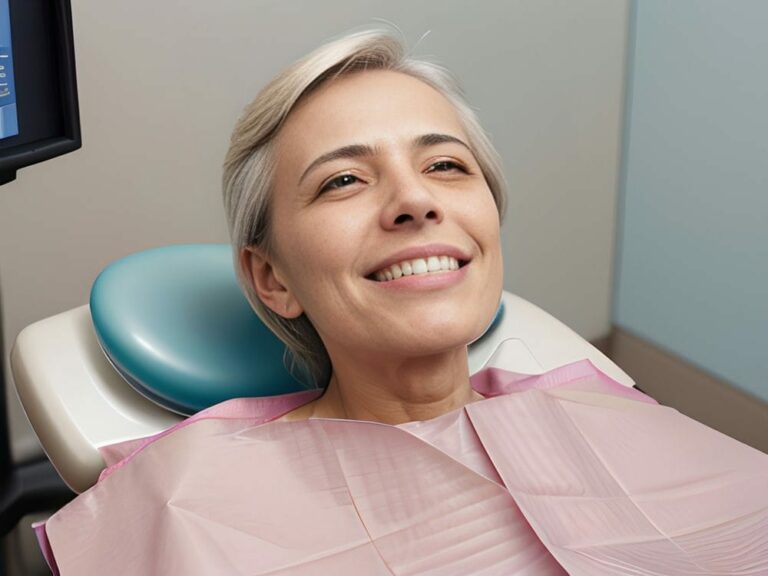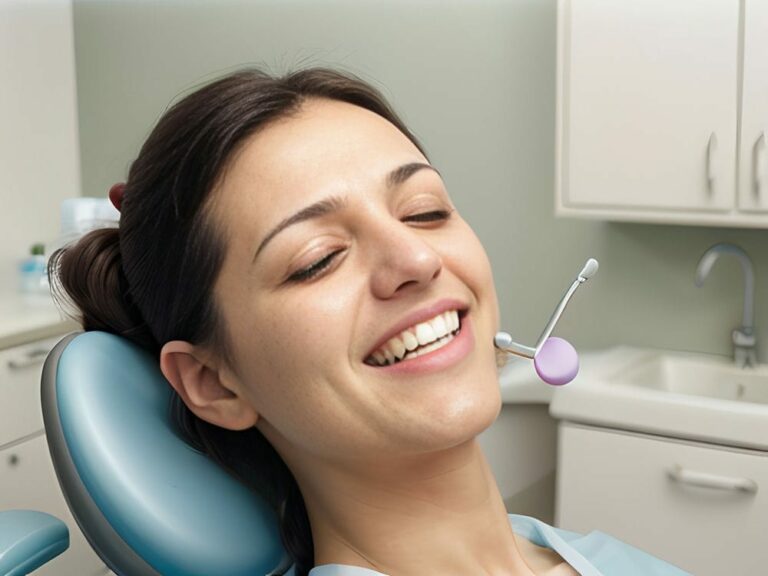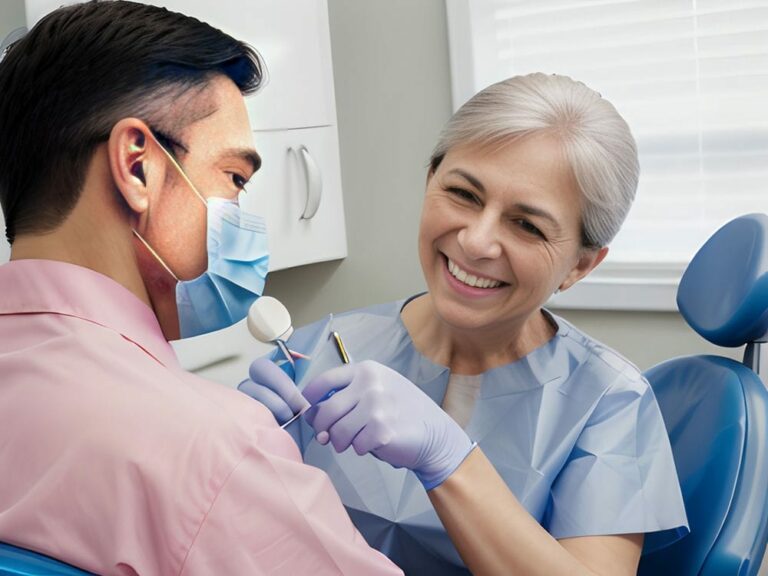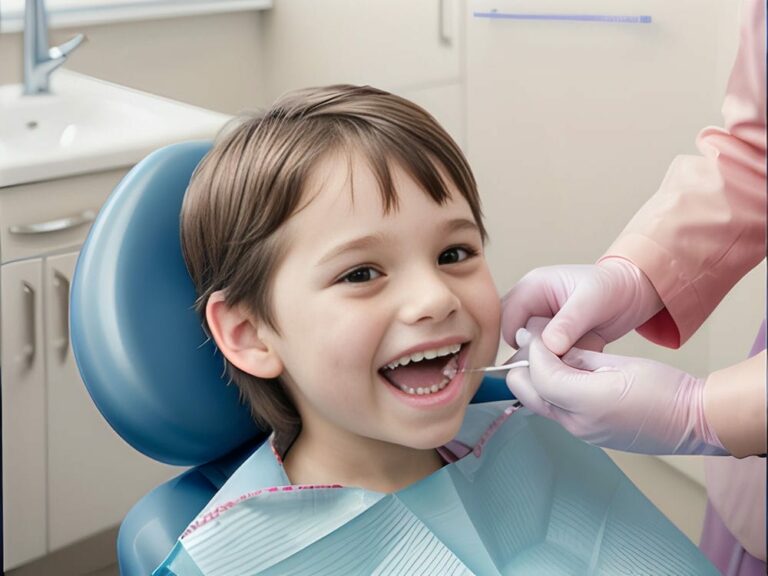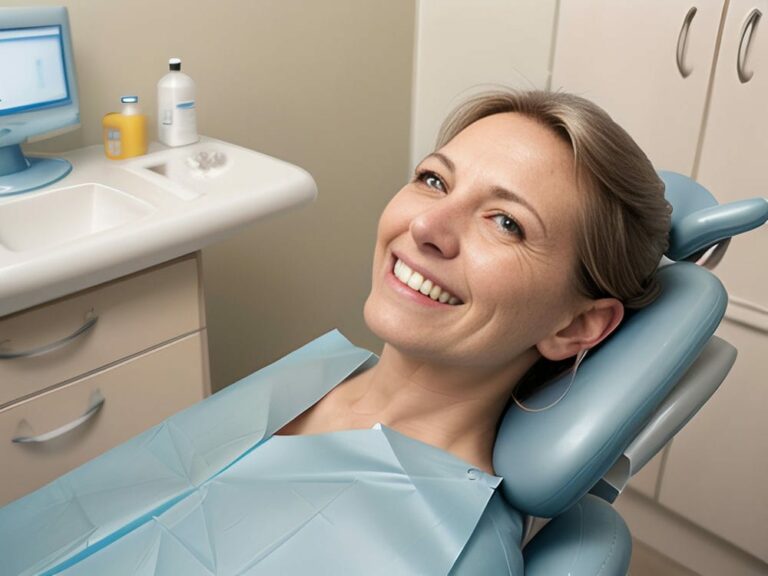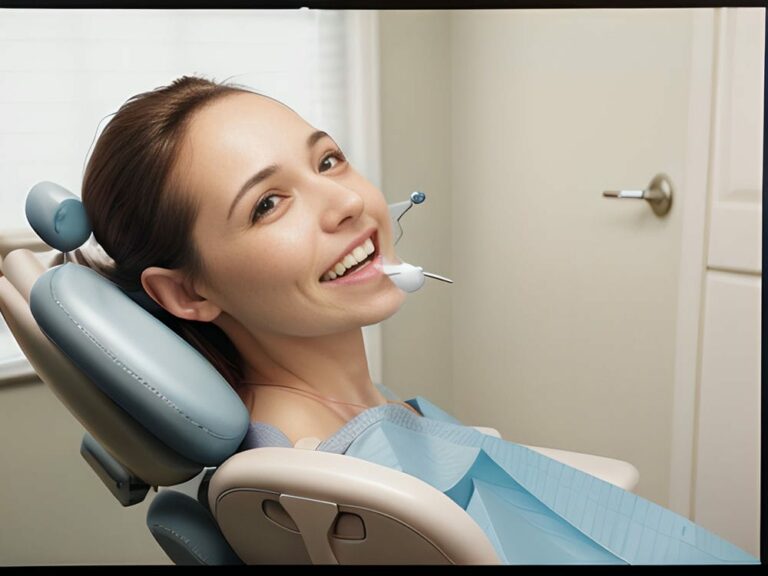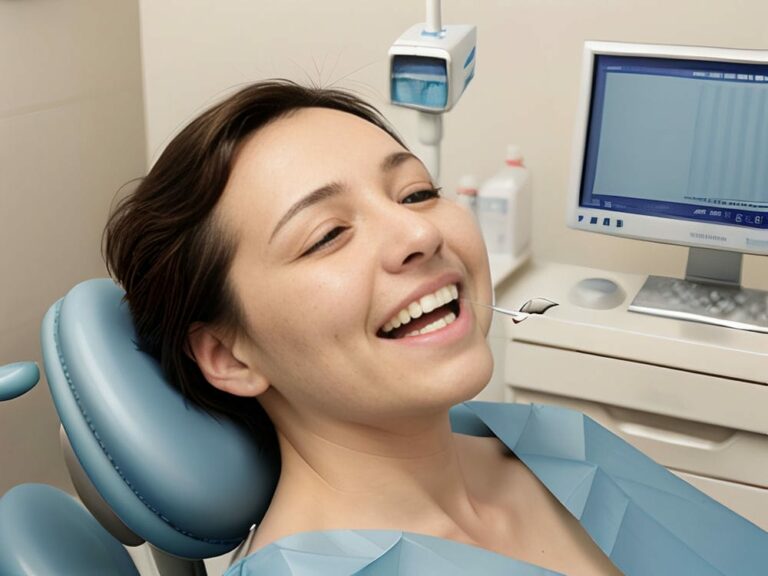The Importance of Sustainable Dentistry: Promoting Eco-Friendly Practices in Dental Care
The Importance of Sustainable Dentistry: Promoting Eco-Friendly Practices in Dental Care
Now, more than ever, the importance of sustainable dentistry cannot be overstated. With climate change and environmental concerns taking center stage, it is crucial for every industry to play its part in reducing its carbon footprint. The field of dentistry is no exception. Sustainable dentistry refers to the adoption of eco-friendly practices and technologies that prioritize energy efficiency, conservation, and waste reduction. By implementing these practices, dental professionals can contribute to a healthier planet while still providing top-notch oral care.
One of the primary reasons why sustainable dentistry is so important is its positive impact on energy efficiency. Traditional dental practices consume a significant amount of energy due to outdated equipment and inefficient office designs. However, by incorporating energy-efficient technologies such as LED lighting and low-energy dental equipment, dental offices can drastically reduce their energy consumption. This not only helps combat climate change but also reduces operating costs for the dental practice.
Moreover, sustainable dentistry promotes conservation efforts that aim to minimize water usage and waste generation. Dental procedures often require an abundant supply of water for rinsing and cleaning purposes. By adopting water-saving techniques such as using high-efficiency faucets and recycling systems, dental practitioners can significantly reduce water wastage without compromising patient care. Additionally, implementing strategies to reduce waste generation through proper material management and recycling programs ensures that dental offices are minimizing their impact on landfills.
In conclusion, sustainable dentistry plays a vital role in addressing environmental challenges faced by the dental industry. By prioritizing energy efficiency, conservation efforts, and waste reduction, dental professionals can contribute to a greener future while still providing excellent oral care services. Embracing eco-friendly practices not only benefits the environment but also allows dental offices to operate more efficiently and cost-effectively in the long run. Therefore, it is imperative for all stakeholders within the field of dentistry to actively promote and adopt sustainable practices for the betterment of our planet.
Environmentally-Friendly Dental Materials: Embracing Natural and Biodegradable Alternatives
Organic, non-toxic, and zero waste dental materials are gaining popularity in sustainable dentistry practices. These eco-friendly alternatives provide a safer and more environmentally conscious approach to oral care.
Firstly, organic dental materials offer a natural and chemical-free option for patients. Traditional dental materials often contain harmful chemicals such as mercury or BPA, which can have negative health effects when exposed to the body. Organic materials, on the other hand, are made from natural substances like plant-based resins or bioactive ceramics, reducing the risk of toxic exposure. By using these non-toxic alternatives, dental professionals can prioritize patient safety while minimizing their impact on the environment.
Secondly, embracing zero waste dental materials helps reduce the amount of waste generated during dental procedures. Traditional materials like single-use plastic products contribute to landfill pollution and harm marine life. In contrast, zero waste alternatives focus on reusable or recyclable options that minimize waste generation. For example, using biodegradable toothbrushes made from bamboo instead of plastic helps reduce plastic waste in our oceans and landfills. By adopting these sustainable choices, dental offices can actively contribute to a cleaner and healthier planet.
Lastly, incorporating organic and zero-waste dental materials aligns with the principles of circular economy – a system that aims to eliminate waste by reusing resources in a closed-loop cycle. By choosing biodegradable or recyclable options for fillings, crowns, or orthodontic appliances, dental professionals can promote sustainability throughout the entire lifecycle of these products. This approach not only reduces environmental impact but also encourages innovation in the development of more eco-friendly materials for the future.
In summary, embracing organic, non-toxic, and zero waste dental materials is an essential aspect of sustainable dentistry practices. By prioritizing patient safety through non-toxic alternatives and reducing waste through reusable or recyclable options, dental professionals can contribute to a greener future while still providing excellent oral care. Incorporating these eco-friendly materials aligns with the principles of circular economy, ensuring a more sustainable approach to dental care.
Green Dental Offices: Implementing Sustainable Practices for a Greener Environment
Green Dental Offices: Implementing Sustainable Practices for a Greener Environment
As the world becomes more conscious of the impact of human activities on the environment, dental offices are taking steps to reduce their carbon footprint and adopt ethical and responsible practices. By implementing sustainable measures, these green dental offices are leading the way in promoting a greener environment.
One way that dental offices can reduce their environmental impact is by adopting energy-efficient practices. This includes using energy-saving appliances, such as LED lights and low-flow faucets, and investing in renewable energy sources like solar panels. By reducing energy consumption, dental offices can lower their carbon emissions and contribute to a cleaner planet.
In addition to energy efficiency, green dental offices also focus on waste reduction and responsible disposal. Implementing recycling programs for materials like paper, plastic, and glass helps minimize waste generation and promotes a circular economy. Furthermore, opting for digital record-keeping instead of paper files not only reduces paper waste but also improves efficiency in managing patient records.
By incorporating sustainable practices into their operations, green dental offices demonstrate their commitment to environmental stewardship while providing quality oral care to patients. These eco-friendly initiatives not only benefit the planet but also enhance the overall patient experience by aligning with their values of sustainability.
In essence, green dental offices play a vital role in creating a greener future. Through energy efficiency measures, waste reduction strategies, and ethical practices, these dental offices reduce their carbon footprint and promote responsible environmental management. By embracing sustainability in dentistry, we can create healthier smiles while preserving our planet for future generations.
Recycling in Dentistry: How to Dispose of Waste Responsibly and Reduce Environmental Impact
Holistic dentistry is an alternative approach to dental care that focuses on the overall health and well-being of patients. It considers the connection between oral health and the rest of the body, recognizing that oral health can impact overall health and vice versa. By taking a holistic approach, dental practitioners aim to provide comprehensive care that addresses not only dental issues but also their potential underlying causes.
In addition to traditional dental treatments, holistic dentistry incorporates alternative therapies and natural remedies into patient care. These may include herbal supplements, homeopathic remedies, acupuncture, and nutritional counseling. By offering these alternative options, holistic dentists strive to provide a more personalized and natural approach to treatment that aligns with patients’ beliefs and values.
Furthermore, holistic dentistry promotes the use of compostable materials in dental procedures whenever possible. This includes using biodegradable toothbrushes made from sustainable materials like bamboo or cornstarch-based plastics. Additionally, compostable dental floss made from plant-based fibers can be used as an eco-friendly alternative to conventional floss made from synthetic materials. By choosing compostable materials, holistic dentists are reducing waste generation and minimizing their environmental impact.
By embracing a holistic approach that incorporates alternative therapies and promotes the use of compostable materials, holistic dental offices are revolutionizing the field of dentistry. They are providing patients with comprehensive care that considers their overall well-being while also promoting sustainability and environmental responsibility. As more people become aware of the benefits of holistic dentistry, this approach has the potential to reshape the future of dental care for a healthier planet and healthier smiles.
Renewable Energy in Dentistry: Harnessing Clean Power for Sustainable Practice Operations
Water conservation is a key component of sustainable dentistry. Dental practices can implement various measures to reduce water consumption and minimize waste. One way to achieve this is by installing low-flow faucets and toilets, which use less water without compromising functionality. Additionally, dentists can incorporate water-saving techniques during procedures, such as using dental dams or suction devices to reduce the amount of water used for rinsing.
Green building practices are also becoming increasingly popular in the dental industry. Green buildings are designed to be energy efficient and environmentally friendly, reducing their carbon footprint. Dental offices can adopt green building principles by using eco-friendly materials for construction and insulation, optimizing natural lighting to reduce reliance on artificial lighting, and implementing energy-efficient heating, ventilation, and air conditioning (HVAC) systems. By embracing green building practices, dental practices can contribute to a healthier environment while also creating a more comfortable workspace for staff and patients.
Pollution prevention is another important aspect of sustainable dentistry. Dental offices generate various types of waste that can have harmful environmental impacts if not properly managed. To prevent pollution, dental practices should implement proper waste segregation and disposal procedures. This includes separating hazardous materials like amalgam fillings from regular waste and ensuring they are disposed of safely according to local regulations. Additionally, recycling programs should be established to recycle materials such as paper, plastic packaging, and glass.
By prioritizing water conservation, embracing green building practices, and implementing pollution prevention measures, dental practices can significantly reduce their environmental impact while providing high-quality care to patients. These sustainable initiatives not only benefit the planet but also contribute to a positive image for the practice and attract environmentally conscious patients who value eco-friendly healthcare options. Sustainable dentistry is not only about oral health but also about promoting overall well-being by creating a healthier environment for everyone involved in the dental care process.
Water Conservation in Dental Care: Implementing Eco-Friendly Strategies for Responsible Water Usage
Water conservation is a crucial aspect of sustainable dentistry, and dental practices can take various measures to reduce water consumption and minimize waste. One effective strategy is installing low-flow faucets and toilets, which use less water without sacrificing functionality. These eco-friendly fixtures are designed to conserve water by limiting the flow rate while still providing sufficient water for daily tasks.
In addition to using water-saving fixtures, dentists can also implement water-saving techniques during procedures. For example, dental dams or suction devices can be used to reduce the amount of water needed for rinsing. By utilizing these techniques, dental practices can minimize their environmental impact by conserving water resources.
Another way that dental practices can contribute to sustainable dentistry is through the use of sustainable materials and renewable resources. When constructing or renovating their offices, dental practices can choose eco-friendly building materials that have minimal environmental impact. Additionally, they can incorporate renewable energy sources such as solar panels or wind turbines to power their operations. By embracing sustainable materials and renewable resources, dental practices can significantly reduce their carbon footprint and promote a greener approach to dental care.
By prioritizing water conservation, implementing eco-friendly building practices, and utilizing sustainable materials and renewable resources, dental practices can make a significant positive impact on the environment. These initiatives not only contribute to the well-being of the planet but also create a more positive image for the practice and attract environmentally conscious patients who value eco-friendly healthcare options. Sustainable dentistry goes beyond oral health; it promotes overall well-being by creating a healthier environment for everyone involved in the dental care process.
The Role of Digital Dentistry in Sustainable Practices: Reduced Paper Waste and Energy Consumption
The Role of Digital Dentistry in Sustainable Practices: Reduced Paper Waste and Energy Consumption
In today’s digital age, technology plays a significant role in various industries, including dentistry. The adoption of digital dentistry not only improves efficiency and accuracy but also contributes to sustainable practices. By transitioning from traditional paper-based methods to digital systems, dental practices can significantly reduce paper waste and energy consumption.
One of the main advantages of digital dentistry is the elimination of paper-based records and forms. Instead of storing patient information on physical charts and documents, dental practices can utilize electronic health records (EHRs) and digital imaging systems. This not only saves space but also reduces the amount of paper used, leading to a substantial decrease in paper waste.
Furthermore, digital systems allow for easier sharing and collaboration among dental professionals. With the use of cloud-based platforms, dentists can securely access patient records, communicate with colleagues, and share diagnostic images without the need for physical copies or transportation. This not only streamlines workflow but also minimizes the carbon footprint associated with printing and transportation.
In addition to reducing paper waste, digital dentistry also contributes to energy conservation. Traditional dental offices often rely on energy-intensive equipment such as X-ray machines and film processors. However, with the adoption of digital radiography and imaging systems, these energy-consuming processes are replaced by more efficient electronic sensors or scanners. Moreover, cloud-based storage eliminates the need for physical servers or data centers that require significant amounts of energy for operation.
By embracing digital dentistry practices, dental professionals are not only enhancing their efficiency but also fulfilling their social responsibility towards sustainability. The reduction in paper waste and energy consumption aligns with eco-friendly principles while promoting a more environmentally conscious approach to oral healthcare. Embracing bio-based materials for dental procedures further reinforces this commitment to sustainability by utilizing renewable resources instead of fossil-fuel-derived products.
Through the integration of digital systems and bio-based materials into dental practices, the industry can pave the way for a more sustainable future. The combination of reduced paper waste and energy consumption not only benefits the environment but also improves patient care through enhanced efficiency and accuracy. By prioritizing sustainable practices, dental professionals can contribute to a greener healthcare system while promoting oral health and overall well-being.
Eco-Friendly Sterilization Techniques: Using Natural and Non-Toxic Methods for Instrument Cleaning
Eco-Friendly Sterilization Techniques: Using Natural and Non-Toxic Methods for Instrument Cleaning
In the pursuit of sustainable dentistry, it is crucial to consider not only the materials and practices used during dental procedures but also the sterilization techniques employed for instrument cleaning. Traditional sterilization methods often involve the use of harsh chemicals that can be harmful to both human health and the environment. However, by adopting eco-friendly sterilization techniques, dental practices can minimize their ecological impact while ensuring patient safety.
One alternative to chemical-based sterilization is the use of natural and non-toxic methods. For instance, steam sterilization, also known as autoclaving, utilizes high-pressure steam to kill bacteria and other microorganisms on dental instruments. This method is not only effective but also environmentally friendly as it does not release harmful chemicals into the air or water systems.
Another eco-friendly sterilization technique is ozone sterilization. Ozone gas has strong antimicrobial properties and can effectively eliminate pathogens on dental instruments. Unlike traditional chemical disinfectants, ozone breaks down into oxygen molecules after use without leaving any harmful residues behind. This makes it a safe option for both patients and dental professionals.
By implementing these natural and non-toxic sterilization methods, dental practices can reduce their reliance on chemical disinfectants that contribute to pollution and waste. These eco-friendly alternatives not only prioritize patient safety but also align with sustainable principles by minimizing environmental harm.
Through a combination of digital dentistry practices, bio-based materials usage, and eco-friendly sterilization techniques, dental professionals have the power to revolutionize oral healthcare towards a more sustainable future. By embracing these advancements in technology and adopting responsible practices, they are making positive strides towards reducing their ecological footprint while delivering quality care to patients.
Biocompatible Dental Materials: Exploring Safe and Sustainable Options for Patient Health
The use of eco-friendly sterilization techniques in dentistry is essential for minimizing environmental harm and ensuring patient safety. Traditional chemical-based methods can be harmful to both human health and the ecosystem, making it crucial for dental practices to adopt natural and non-toxic alternatives.
One such method is steam sterilization, also known as autoclaving. By using high-pressure steam, this technique effectively kills bacteria and microorganisms on dental instruments without releasing harmful chemicals into the air or water systems. Steam sterilization is not only environmentally friendly but also highly effective in maintaining a sterile environment within the dental practice.
Another eco-friendly option is ozone sterilization. Ozone gas has strong antimicrobial properties and can eliminate pathogens on dental instruments. Unlike chemical disinfectants, ozone breaks down into harmless oxygen molecules after use, leaving no harmful residues behind. This makes ozone sterilization a safe choice for both patients and dental professionals.
By implementing these natural and non-toxic sterilization techniques, dental practices can reduce their reliance on chemical disinfectants that contribute to pollution and waste. These eco-friendly alternatives prioritize patient safety while aligning with sustainable principles by minimizing environmental harm.
Through embracing eco-friendly practices such as digital dentistry, utilizing bio-based materials, and adopting natural sterilization methods, dental professionals have the power to revolutionize oral healthcare towards a more sustainable future. By incorporating these advancements in technology and responsible practices, they are taking positive steps towards reducing their ecological footprint while delivering quality care to patients.
Educating Patients on Sustainable Oral Healthcare: Promoting Green Habits and Products for a Healthy Planet
One of the key aspects of sustainable dentistry is educating patients on sustainable oral healthcare practices. By promoting green habits and products, dental professionals can empower patients to make environmentally conscious choices that are beneficial for both their oral health and the planet.
Firstly, it is crucial to educate patients about proper oral hygiene techniques that minimize waste and reduce their ecological footprint. Encouraging patients to use eco-friendly dental products such as bamboo toothbrushes, biodegradable floss, and natural toothpaste can significantly reduce plastic waste in landfills and oceans. Additionally, promoting water conservation by reminding patients to turn off the faucet while brushing their teeth can also contribute to a greener lifestyle.
Secondly, dental professionals can educate patients on the importance of choosing sustainable dental treatments. For instance, recommending minimally invasive procedures that conserve natural tooth structure instead of opting for unnecessary extractions or extensive restorations can help preserve resources and reduce waste. Furthermore, advocating for mercury-free fillings and biocompatible materials ensures patient safety while minimizing environmental impact.
Lastly, dental practices can promote sustainability by implementing recycling programs within their offices. Encouraging patients to recycle their old toothbrushes, toothpaste tubes, and other dental product packaging not only reduces waste but also raises awareness about the importance of responsible disposal.
By educating patients on sustainable oral healthcare practices and promoting green habits and products, dental professionals can play a significant role in creating a healthier planet for future generations. Together with eco-friendly practices in dental offices, these efforts contribute towards a more sustainable future in dentistry and beyond.
FAQs
Q: What is sustainable dentistry?,
A: Sustainable dentistry refers to dental practices that prioritize environmental, social, and economic sustainability by reducing waste, conserving resources, and implementing eco-friendly techniques.,
Q: How does sustainable dentistry contribute to environmental conservation?,
A: Sustainable dentistry minimizes the use of harmful materials, reduces water and energy consumption, and implements recycling and waste management practices to reduce its environmental impact.,
Q: What eco-friendly techniques are used in sustainable dentistry?,
A: Eco-friendly techniques in sustainable dentistry include using digital radiography instead of traditional X-rays, using biodegradable materials, implementing energy-efficient equipment, and practicing water conservation.,
Q: How does sustainable dentistry promote social sustainability?,
A: Sustainable dentistry focuses on providing equitable access to dental care, promoting patient education and involvement, and supporting local communities through socially responsible practices.,
Q: What is a key aspect of sustainable dentistry in terms of economic sustainability?,
A: Economic sustainability in dentistry involves using cost-effective and long-lasting materials, investing in energy-efficient technologies, and adopting efficient waste management systems to reduce expenses.,
Q: How does sustainable dentistry reduce the use of harmful materials?,
A: Sustainable dentistry reduces the use of harmful materials by opting for environmentally friendly alternatives, such as composite resin fillings instead of amalgam fillings that contain mercury.,
Q: What are the benefits of using digital radiography in sustainable dentistry?,
A: Digital radiography in sustainable dentistry reduces radiation exposure, eliminates the need for toxic developing chemicals, and allows for easy storage and transfer of patient records.,
Q: How does sustainable dentistry conserve water?,
A: Sustainable dentistry conserves water by implementing low-flow faucets and toilets, using waterless or reduced water sterilization methods, and adopting efficient water management practices.,
Q: What role does patient education play in sustainable dentistry?,
A: Patient education plays a vital role in sustainable dentistry by raising awareness about eco-friendly practices, encouraging patients to make environmentally conscious choices, and promoting overall oral health.,
Q: How can dental practices support local communities through sustainable dentistry?,
A: Dental practices can support local communities through sustainable dentistry by sourcing materials locally, implementing fair labor practices, donating dental services to underserved populations, and participating in community outreach programs.









